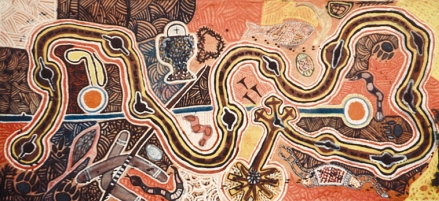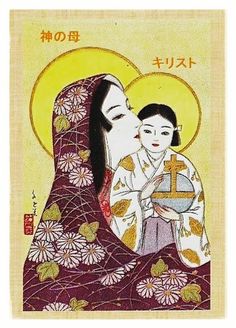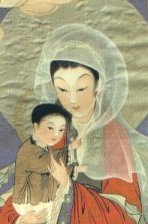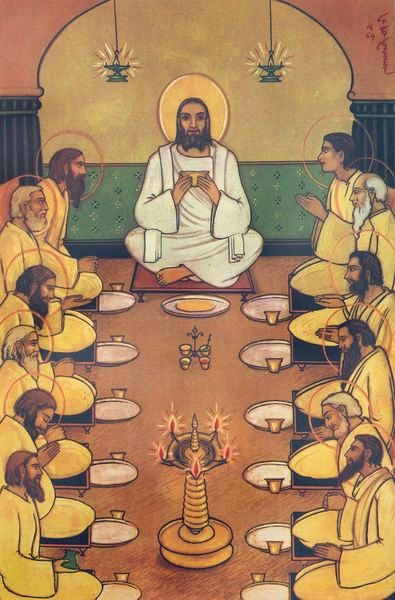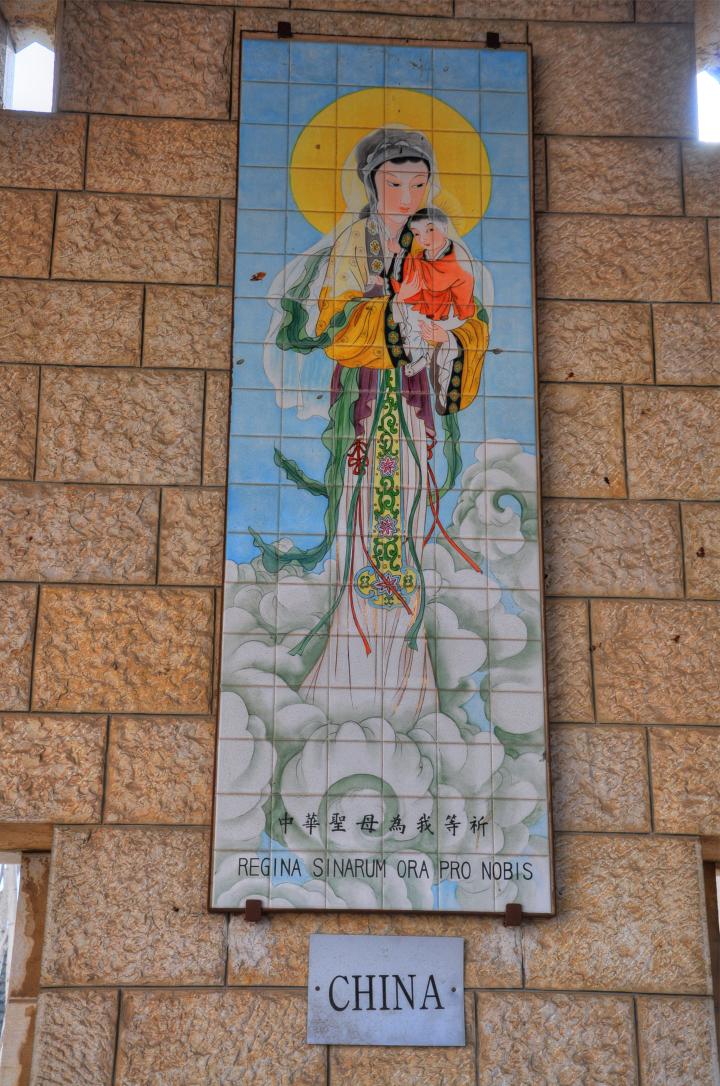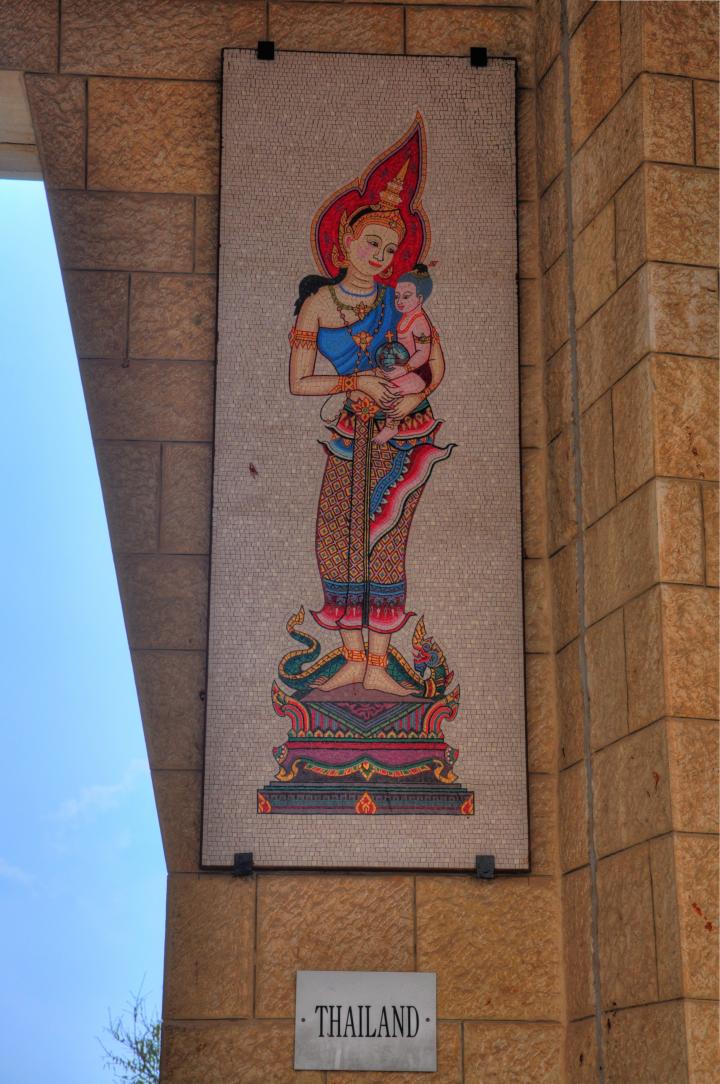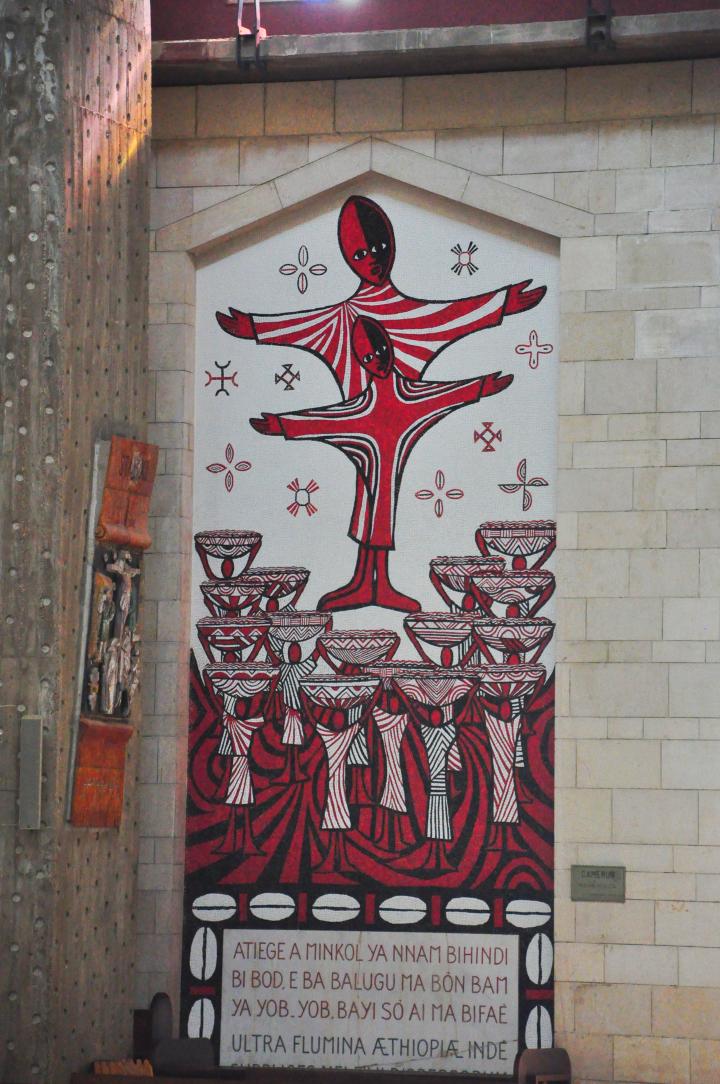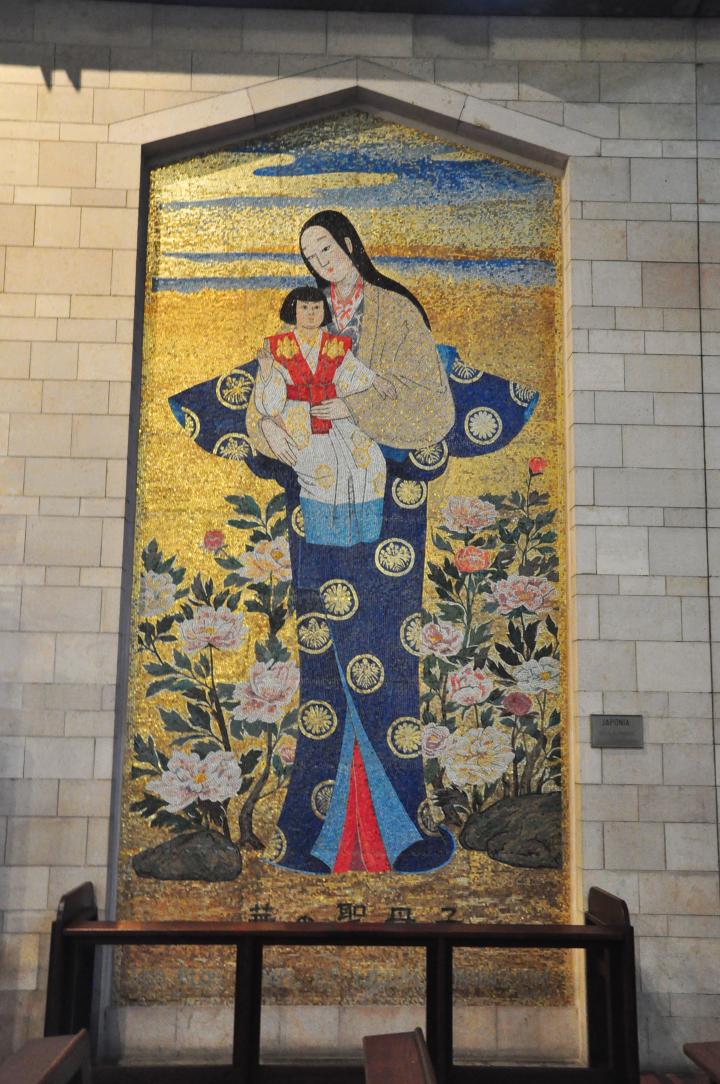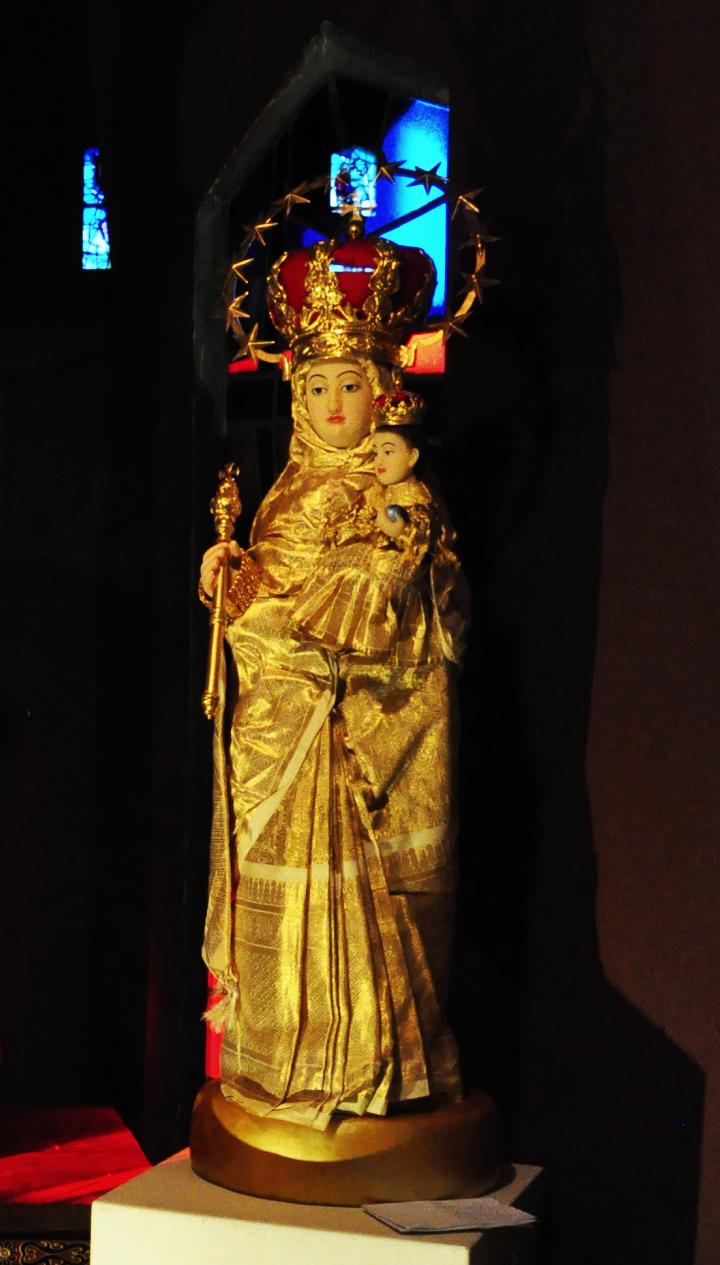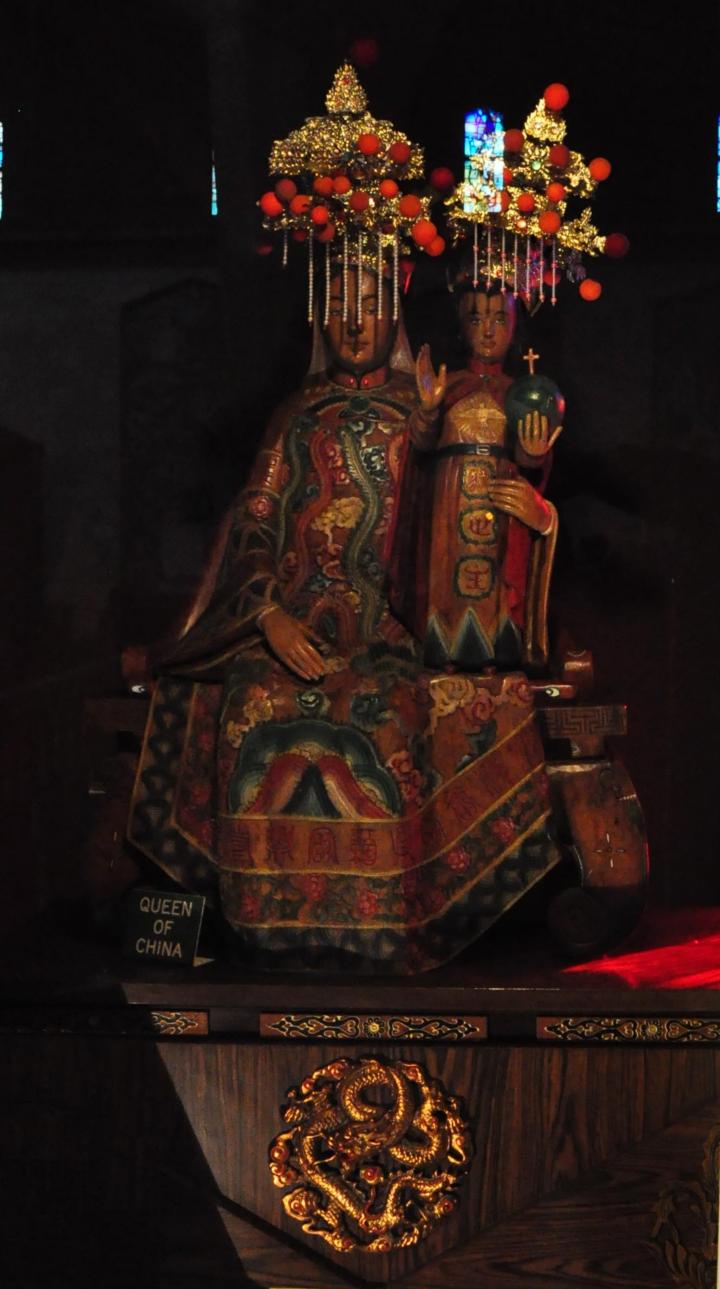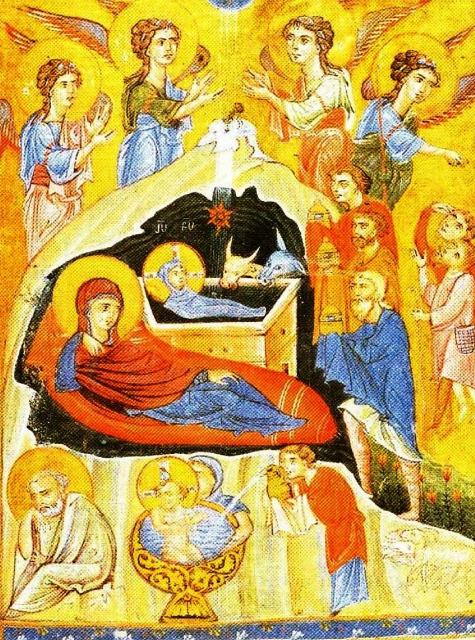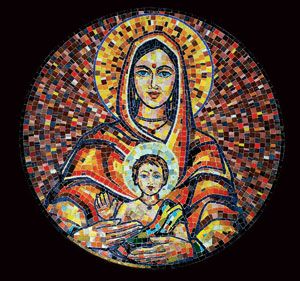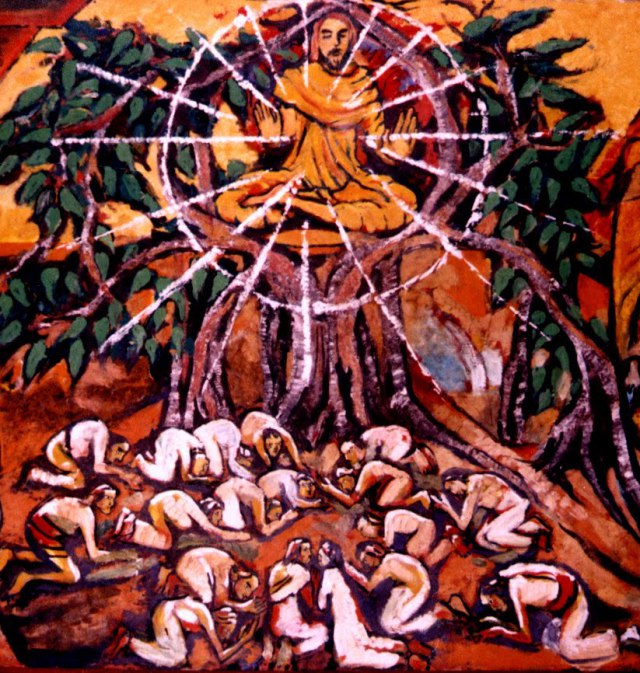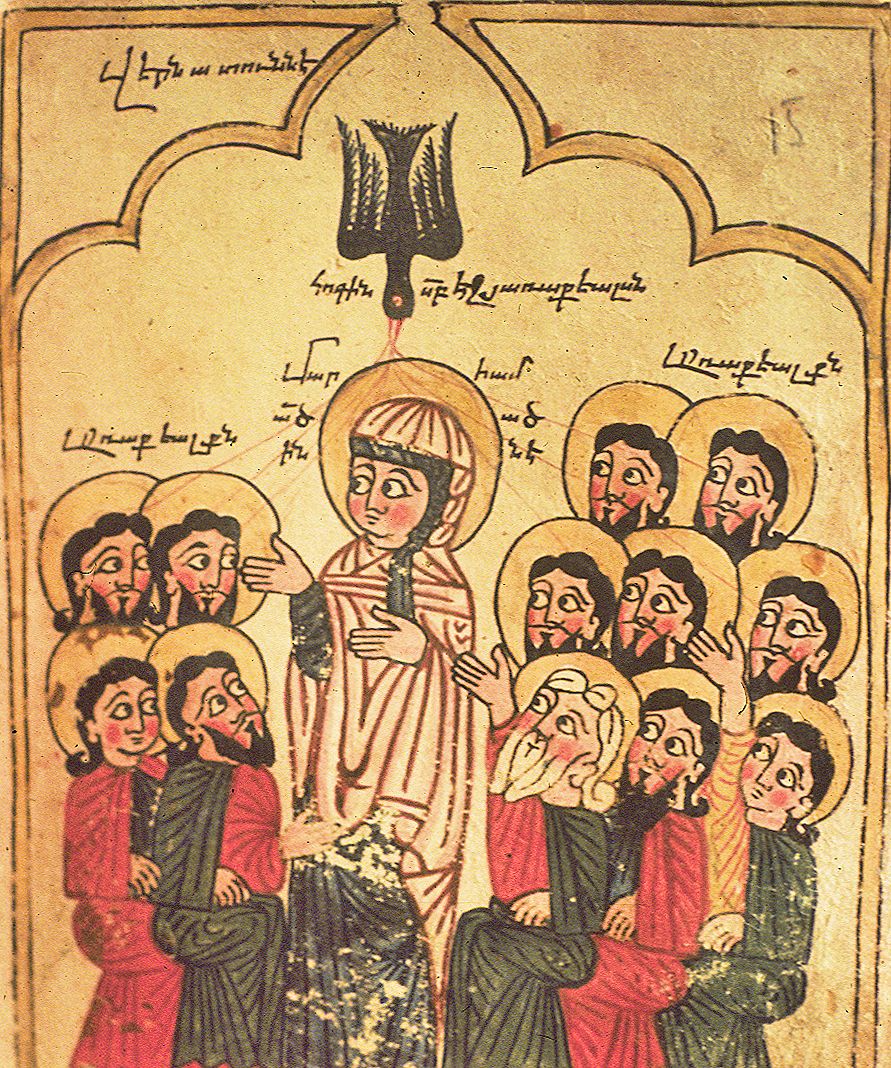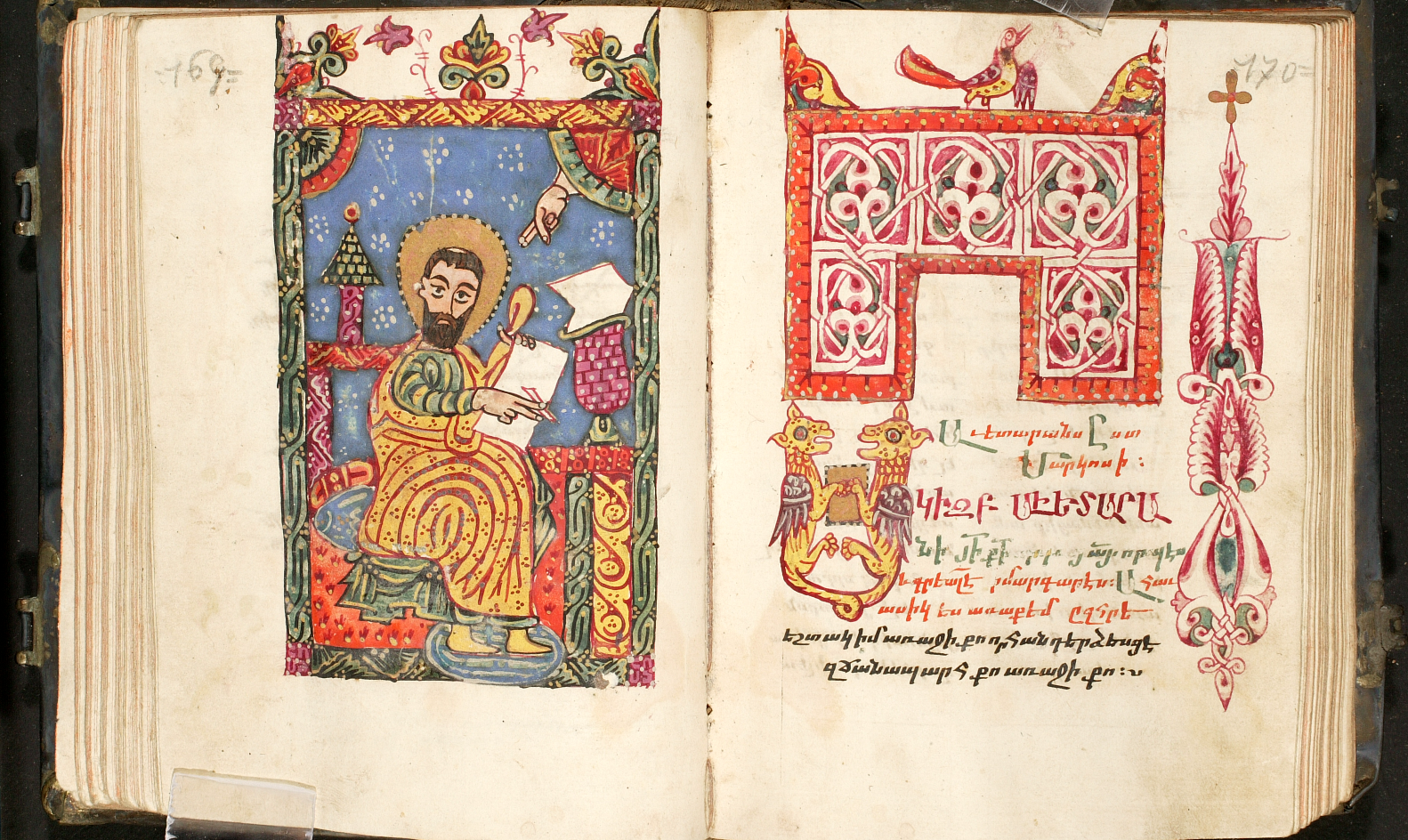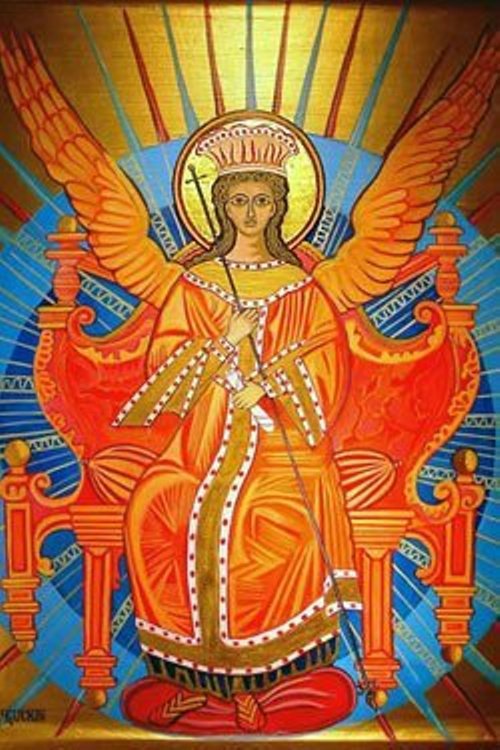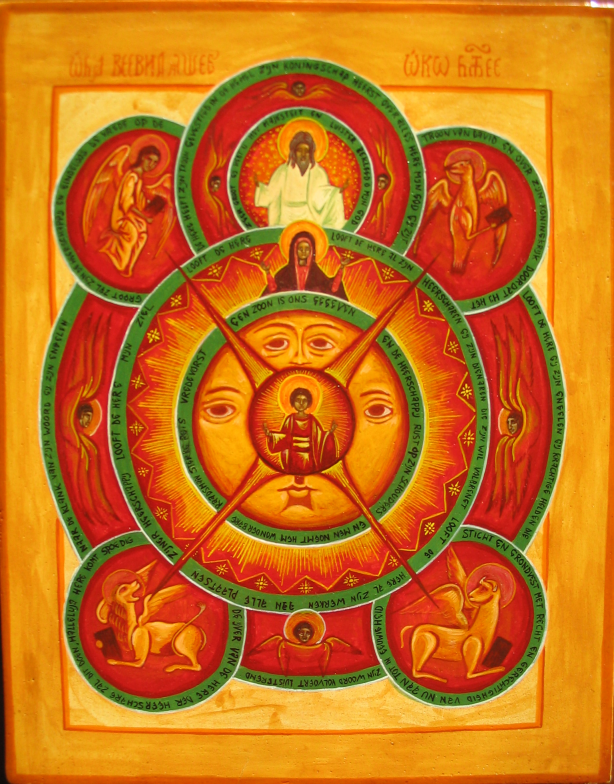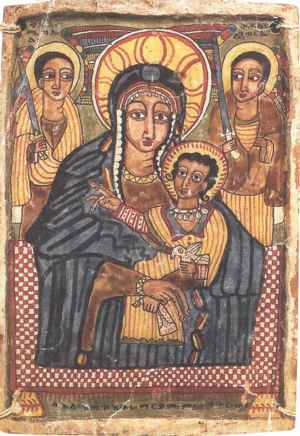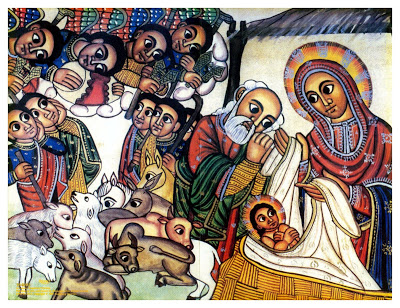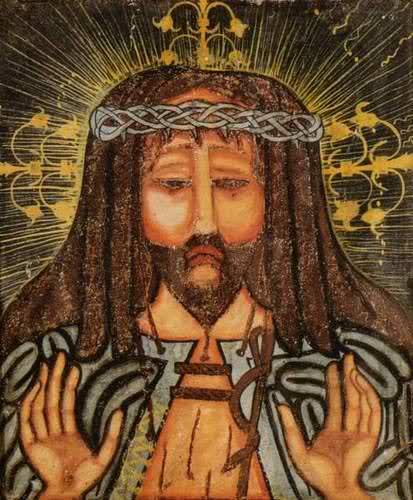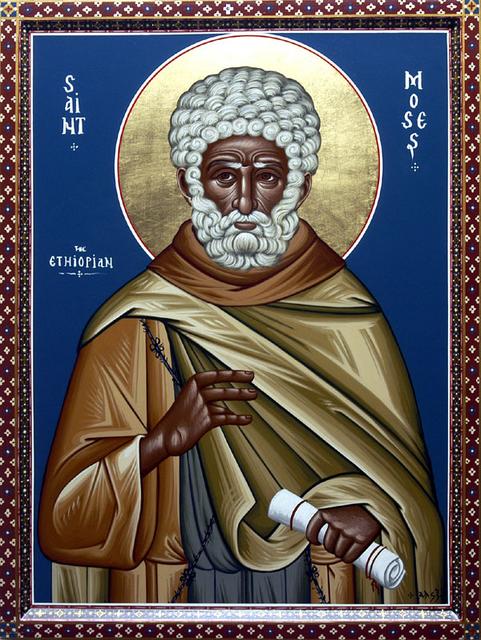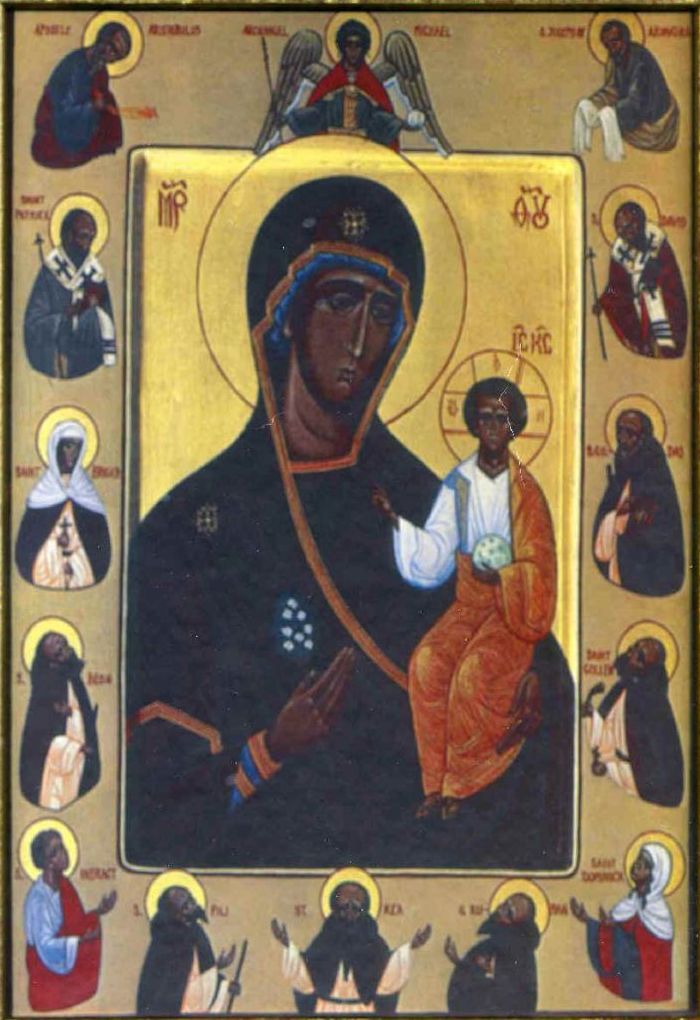- Jan 25, 2009
- 19,769
- 1,429
- Faith
- Oriental Orthodox
- Marital Status
- Private
- Politics
- US-Others
Shalom 
Concerning what has been on my mind, I have been very much blessed of late with one of the ministries I've kept up with that does extensive focus on the many ways Indigenous cultures are often neglected in many Liturgical circles when it comes to the arts - especially as it concerns Icons. What stood out was the ways that others who are Aboriginals, for example, do not visualize Christ or many scenes in the scriptures in the same way that others in Greek or Byzantine culture did - and when expressing it in the manner they do, it truly does stand out.
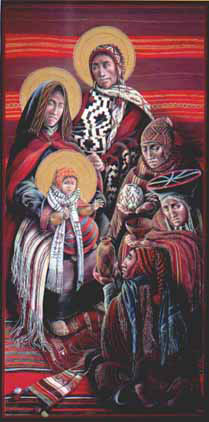
In example, here's one of Christ the Good Shepherd from a Native American perspective:

Both are from Father Giuliani, who began a year-long study of Orthodox iconography with Russian icon master Vladislav Andreyev at the School of Sacred Art in Greenwich Village.
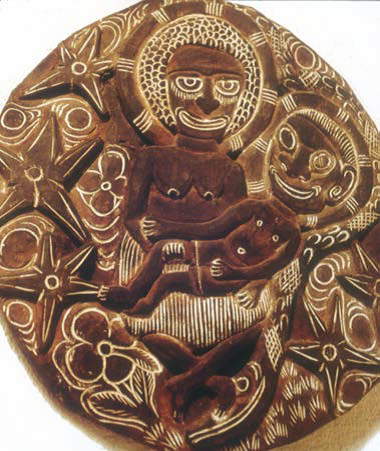
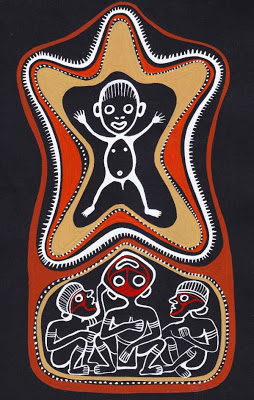
The first image is the Virgin Mary with Christ as a child - and the second is The Star of Bethlehem, the birth of Jesus, and the Magi portrayed in the Kwoma visual language'
And of course, the Virgin Mary again with Christ:

And this one is of Christ on the Cross as well as the Last Supper:


Although the one above is from an Aboriginal perspective, this one has Thai influences as well as Persian:

I personally believe that portraying things in a manner that fits the culture one is in will allow for iconography to have more of a widespread impact - as it seems in many cases that icons are limited to only the Byzantine style and that seems to be a hinderance to others being reached for Christ than others are willing to let on. As said elsewhere, one cannot make cultural norms based in the Church an idol when it comes to seeing how something was expressed in one era...and not being willing to change it at any point in order to help others see things more clearly if something arises. For just as others in the Byzantine era contexualized the Faith as they understood it in their times so as to be better able to make disciples/convey truth ....in the same manner Jewish believers from a Hellenized background used Greek concepts/imagery to convey Biblical principles to others in the Greek world so that they'd understand).... so it is the case, IMHO, that there should never be such a focus on the past that there's never ability to understand (or be able) to know when change may be necessary. IMHO, it's tragic when the church has taken the contextualization of one generation or one culture and declared that as normative for all time - or used it to condemn a new framing, a new contextualization. Personally...this is something that I must say has been my biggest concern with the "high" churches, especially Orthodoxy. I don't understand why the culture, art, hymnology, and symbols of 4th-century Byzantium are held in such high regard as to be considered in essence the peak of perfection, the summit of revelation...but anything differing from that, be it Assyrian or Oriential Orthodox and so forth, is treated with disdain or contempt.
Does anyone have any thoughts? Do you feel an Indigenous Iconography is something others should speak on more when it comes to expressing truth?
Concerning what has been on my mind, I have been very much blessed of late with one of the ministries I've kept up with that does extensive focus on the many ways Indigenous cultures are often neglected in many Liturgical circles when it comes to the arts - especially as it concerns Icons. What stood out was the ways that others who are Aboriginals, for example, do not visualize Christ or many scenes in the scriptures in the same way that others in Greek or Byzantine culture did - and when expressing it in the manner they do, it truly does stand out.


Both are from Father Giuliani, who began a year-long study of Orthodox iconography with Russian icon master Vladislav Andreyev at the School of Sacred Art in Greenwich Village.


The first image is the Virgin Mary with Christ as a child - and the second is The Star of Bethlehem, the birth of Jesus, and the Magi portrayed in the Kwoma visual language'
And of course, the Virgin Mary again with Christ:

And this one is of Christ on the Cross as well as the Last Supper:


Although the one above is from an Aboriginal perspective, this one has Thai influences as well as Persian:

I personally believe that portraying things in a manner that fits the culture one is in will allow for iconography to have more of a widespread impact - as it seems in many cases that icons are limited to only the Byzantine style and that seems to be a hinderance to others being reached for Christ than others are willing to let on. As said elsewhere, one cannot make cultural norms based in the Church an idol when it comes to seeing how something was expressed in one era...and not being willing to change it at any point in order to help others see things more clearly if something arises. For just as others in the Byzantine era contexualized the Faith as they understood it in their times so as to be better able to make disciples/convey truth ....in the same manner Jewish believers from a Hellenized background used Greek concepts/imagery to convey Biblical principles to others in the Greek world so that they'd understand).... so it is the case, IMHO, that there should never be such a focus on the past that there's never ability to understand (or be able) to know when change may be necessary. IMHO, it's tragic when the church has taken the contextualization of one generation or one culture and declared that as normative for all time - or used it to condemn a new framing, a new contextualization. Personally...this is something that I must say has been my biggest concern with the "high" churches, especially Orthodoxy. I don't understand why the culture, art, hymnology, and symbols of 4th-century Byzantium are held in such high regard as to be considered in essence the peak of perfection, the summit of revelation...but anything differing from that, be it Assyrian or Oriential Orthodox and so forth, is treated with disdain or contempt.
Does anyone have any thoughts? Do you feel an Indigenous Iconography is something others should speak on more when it comes to expressing truth?




